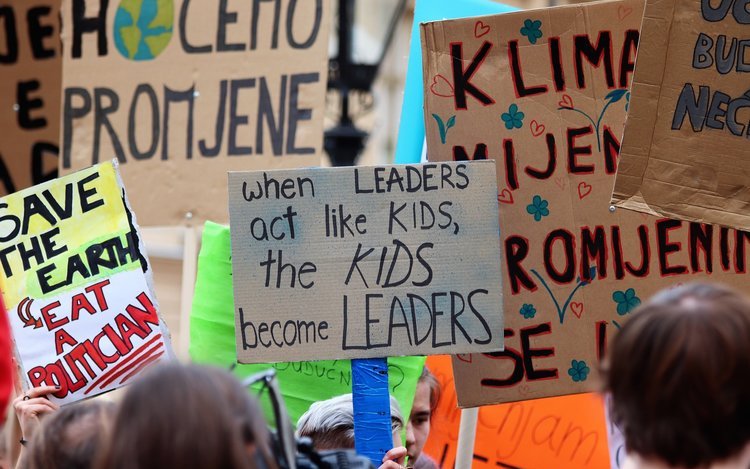Climatic migrations: “To see or not to see? That is the question!”

On March 30, the Migrants and Refugees Section of the Dicastery for Promoting Integral Human Development published the Pastoral Orientations on Climate Displaced People.
Climate Displaced People are individuals or groups of persons who are forced to move out of their habitual place of residence on account of acute climate crisis.
The climate crisis, indeed, also has a “human face.” It is already a reality for millions of people around the world, especially for the inhabitants of the existential peripheries.
The Pastoral Orientations on Climate Displaced People is a booklet full of relevant facts, interpretations, policies and proposals … but at the very beginning, I suggest we adapt Hamlet’s famous “to be or not to be” and affirm: “To see or not to see: that is the question!” Where it starts is with each one’s seeing, yes, mine and yours.
We are engulfed by news and images of whole peoples uprooted by cataclysmic changes in our climate, forced to migrate. But what effect these stories have on us, and how we respond — whether they cause fleeting responses or trigger something deeper in us; whether it seems remote or whether we feel it close to home — depends on our taking the trouble to see the suffering that each story entails in order “to become painfully aware, to dare to turn what is happening … into our own personal suffering and thus to discover what each of us can do about it” (Laudato si’, 19).
When people are driven out because their local environment has become uninhabitable, it might look like a process of nature, something inevitable. Yet the deteriorating climate is very often the result of poor choices and destructive activity, of selfishness and neglect, that set humankind at odds with creation, our common home.
Unlike the pandemic, which came on us suddenly, without warning, almost everywhere, and impacting everyone at once, the climate crisis has been unfolding since the Industrial Revolution. For a long time it developed so slowly that it remained imperceptible except to a very few clairvoyants. Even now it is uneven in its impact: climate change happens everywhere, but the greatest pain is felt by those who have contributed the least to it.
Yet like the COVID-19 crisis, the huge and increasing numbers displaced by climate crises are fast becoming a great emergency of our age, visible almost nightly on our screens, and demanding global responses. […]
When we look, what do we see? Many are being devoured in conditions that make it impossible to survive. Forced to abandon fields and shorelines, homes and villages, people flee in haste carrying just a few souvenirs and treasures, scraps of their culture and heritage. They set out in hope, meaning to restart their lives in a place of safety. But where they mostly end up are dangerously overcrowded slums or makeshift settlements, waiting on fate. […]
The Pastoral Orientations on Climate Displaced People calls on us to broaden the way we look at this drama of our time. It urges us to see the tragedy of prolonged uprootedness that causes our brothers and sisters to cry out, year after year, “We can’t go back, and we can’t begin anew.” It invites us to become aware of the indifference of societies and governments to this tragedy. It asks us to see, and to care. It invites the Church and others to act together, and spells out how we might do so.
This is the work the Lord asks now of us, and there is great joy in it. We are not going to get out of crises like climate or COVID-19 by hunkering down in individualism but only by “being many together”, by encounter and dialogue and cooperation. Which is why I am so pleased that these Pastoral Orientations on Climate Displaced People have been produced, within the Dicastery for Promoting Integral Human Development, jointly by the Migrants and Refugees Section and by the Integral Ecology Sector. This connecting up is in itself a sign of the way forward.
“To see or not to see?”: is the question that leads us to the answer in action together. These pages show us what is needed and, with God’s help, what to do.
from the Preface by pope Francis
The booklet, available in several languages, can be downloaded here.









